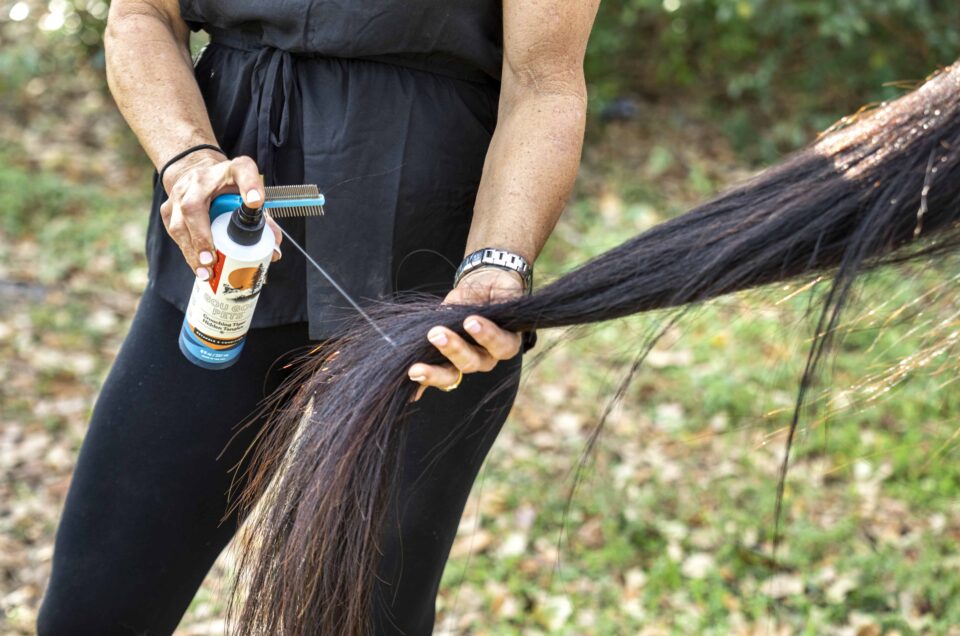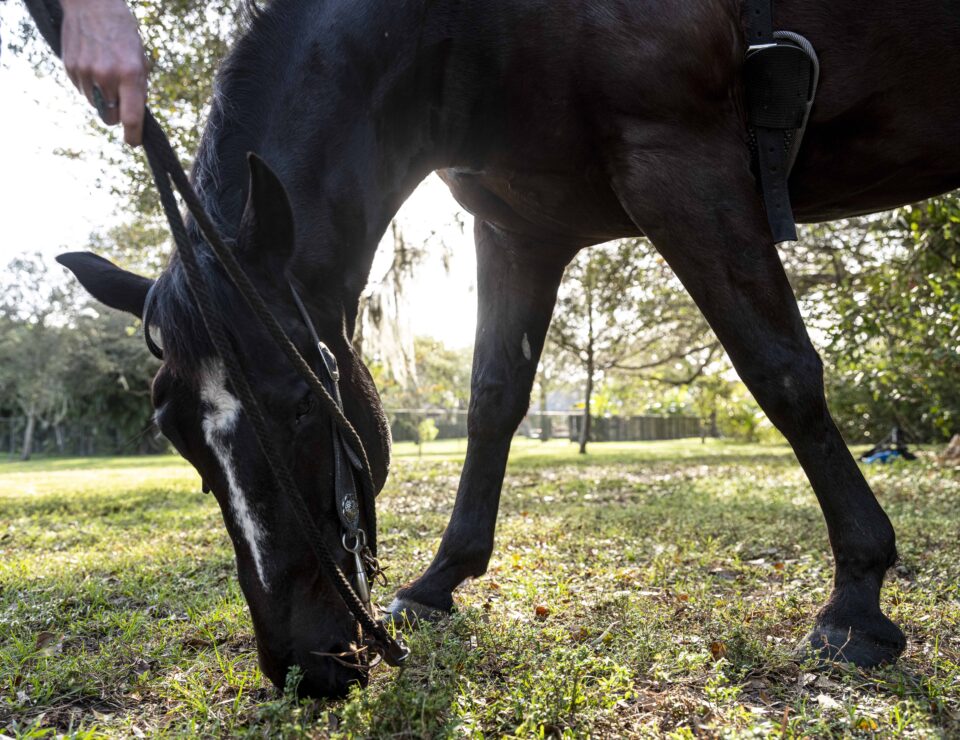Grooming Horses in Winter: Do’s and Don’ts
Winter horse grooming is crucial for their health and comfort, as it requires the use of appropriate tools and techniques to maintain cleanliness and prevent hidden injuries. It’s essential to strike a balance between keeping them warm and clean.
Key Takeaways
- Winter grooming requires different tools and techniques compared to warmer months.
- Regular grooming is essential for spotting hidden injuries and maintaining horse health.
- Using grooming vacuums and shedding blades can help manage thick winter coats.
- Blanketing and clipping are important considerations in winter care.
- Adapting your grooming routine to the weather is crucial for horse comfort and cleanliness.
Understanding the Challenges of Winter Horse Grooming
Why Winter Grooming is Different
Winter grooming isn’t just about keeping your horse looking good; it’s about maintaining their health and comfort through the colder months. As temperatures drop, horses grow thicker coats to stay warm, which can trap sweat and dirt. Unlike in summer, you can’t just hose them down after a ride without risking a chill. This makes grooming in winter a bit of a puzzle that requires a different approach.
Common Winter Coat Issues
Horses often sweat more in winter because their dense coats hold heat. This can lead to issues like sweat buildup, which is hard to manage without regular baths. You’ll also find that dirt and mud can become caked into their coats, making them difficult to clean. Not to mention, static electricity can cause your horse’s coat to tremble!
The Importance of Regular Grooming
Winter grooming is essential for maintaining a horse’s health and appearance. It removes dirt, sweat, and promotes healthy blood flow, distributing natural oils, and detecting hidden injuries. Embrace the challenge and use it as an opportunity to bond with your horse.
For more on managing a sweaty winter coat after riding, check out tips on proper cooling-out techniques to keep your horse healthy and comfortable.
Essential Tools for Grooming Horses in Winter
Choosing the Right Curry Comb
Winter grooming calls for a curry comb that can handle thick coats. Unlike traditional combs, a winter curry comb has longer “fingers” to reach through dense hair, loosening dirt and massaging the skin. This not only helps in removing debris but also stimulates blood circulation, keeping your horse’s skin healthy.
Using Shedding Blades Effectively
Shedding blades aren’t just for spring! In winter, they can be a lifesaver for tackling caked-on mud and dirt. Use the toothed side on fleshy areas to scrape away the grime, but be gentle on sensitive spots. A shedding blade is perfect for horses with thick coats, making grooming quicker and more efficient.
The Role of Grooming Vacuums
Grooming vacuums are a lifesaver in winter, quickly removing dust and debris from your horse’s coat. Gradually introduce the vacuum to avoid spooking and maintain a clean, comfortable routine.

Techniques for Effective Winter Grooming
Mastering the Art of Currying
Currying is crucial for winter grooming, as it loosens dirt and distributes natural oils, keeping your horse’s coat healthy and shiny. Use a curry comb with longer “fingers” for optimal results.
Dealing with Mud and Sweat
Winter brings increased mud and sweating in horses. Use shedding blades for mud and currycombs for sensitive spots. Groom thoroughly before and after exercise, especially in saddle, bridle, and girth areas.
Quick Grooming Tips for Busy Days
- Focus on key areas like saddle, girth, behind the pasterns, and under the jaw for comfort and safety.
- Use a quick brush and check to prevent issues later.
- Consider using a grooming vacuum for fast clean-up.
- Winter grooming doesn’t have to be a chore; it’s about maintaining horse’s health and happiness.
Maintaining Your Horse’s Health During Winter
Spotting Hidden Injuries
Winter grooming is more than just keeping your horse looking good—it’s about health. With thicker coats, it’s easy to miss small scrapes or bumps. Regular grooming sessions are your chance to check for any hidden injuries. Run your hands along your horse’s legs and back to feel for any unusual heat or swelling. This hands-on approach helps you catch issues early. Keeping a wound care product on hand is always a smart move.
Managing Sweat and Moisture
Winter coats can be tricky, especially when your horse sweats. Sweat can trap moisture, leading to skin problems like bacterial infections or sores. After a ride, take the time to properly cool down your horse. Use a cooler to absorb moisture and keep them warm. Walk your horse until they are dry to prevent chills. If bathing is out of the question, consider using a grooming product to tackle sweat marks and dirt.
The Benefits of Regular Grooming
- Maintains cleanliness and promotes healthy coat.
- Uses rubber curry comb to loosen dirt and mud.
- Strengthens bond between horse and owner.
- Essential for horse’s health routine.
- Regular checks and cleaning prevent minor issues from becoming major problems.
To keep your horse hydrated and comfortable during winter, make sure to prevent ice in their water troughs by using heat sources like water heaters. Regularly check their water availability to ensure they have access to fresh water at all times.
The Role of Blanketing and Clipping in Winter Grooming
When to Blanket Your Horse
- Clipping removes natural guard hairs, increasing vulnerability to cold.
- Balancing weather conditions and horse comfort is crucial.
- For chilly conditions or clipped horses, a blanket is essential.
- Under the blanket, daily checks are necessary for hidden issues like skin infections or weight loss.
Pros and Cons of Clipping
- Easier grooming and sweat management.
- Lifesaver for horses under thick winter coats.
- Requires blanketing for warmth.
- Trace clip removes hair in sweaty areas.
How to Inspect Under Blankets
- Blanketing can hide problems, so it’s important to inspect underneath daily.
- Check for skin issues, injuries, or body condition changes.
- Quick daily inspection prevents small issues from becoming major problems.
- Tailoring approach to each horse’s needs and weather conditions is crucial.
Keeping Your Horse Comfortable and Clean
Using Grooming Oils and Conditioners
Winter coat dryness can be addressed with grooming oils and conditioners. Mix oil with warm water after grooming to condition the coat and repel dust. Apply oil to manes and tails for detangling and conditioning.
Preventing and Treating Stains
- Use spot-removing product on stubborn stains.
- Rub alcohol on cloth for quick fixes.
- Dust green spots with cornstarch or baby powder for camouflage.
- Allow for thorough cleaning.
Tips for a Healthy Mane and Tail
- Maintaining a healthy mane and tail is crucial for horse comfort.
- Regular detangling with a wide-toothed comb and leave-in conditioner.
- Avoid washing the mane and tail frequently during winter to prevent stripping of natural oils.
- Focus on maintaining cleanliness and a tangle-free appearance with regular grooming sessions.
- Use appropriate products and techniques to simplify winter grooming and maintain optimal horse appearance.

Preparing for Winter Rides
Grooming Before Riding
Getting your horse ready for a winter ride is a bit different than in the warmer months. First, you want to make sure your horse’s coat is clean and free of any debris that might cause irritation under the saddle. Use a winter curry comb to break up mud and loosen dirt. Pay extra attention to areas like the saddle and girth, as these spots are prone to sweat and dirt buildup. If your horse tends to have a thick coat, consider using a slicker brush to reach the skin and remove any hidden dirt.
Cooling Down After Exercise
After a ride, cooling down your horse properly is crucial. In the winter, sweat can become a real problem if not managed correctly. Use a fleece cooler to help wick away moisture and protect your horse from the chill. Walk your horse until their breathing returns to normal and they feel dry to the touch. If your horse is particularly sweaty, focus on drying the girth and saddle areas with a towel or a grooming block. If it’s too cold for a full bath, a sponge with warm water can be used to spot clean.
Protecting Against Cold Weather Injuries
Winter riding poses risks to your horse, so be vigilant. Check their legs for injury, ensure clear paths, and monitor their shoes for potential issues. Regular grooming helps prevent issues early. With proper preparation, winter riding can be enjoyable and safe for both you and your horse.
Creating a Winter Grooming Routine
Setting Up a Grooming Schedule
Creating a consistent grooming schedule is essential for keeping your horse looking and feeling great during the winter months. Start by assessing your horse’s needs. Consider how often your horse gets dirty and how much time you can realistically dedicate to grooming each week. A good rule of thumb is to groom your horse at least three to four times a week, but adjust based on your horse’s specific needs and your schedule.
Adapting to Weather Changes
Winter weather can be unpredictable, so it’s important to be flexible with your grooming routine. Monitor the weather forecast and modify your grooming schedule accordingly. On particularly cold days, focus on essential grooming tasks that keep your horse comfortable, like brushing out dirt and checking for sores or irritations. On milder days, you can spend more time grooming thoroughly.
Incorporating Grooming into Daily Care
Grooming your horse doesn’t need to be a separate task; integrate quick sessions using efficient tools and techniques. Use rubbing alcohol to remove sweaty saddle marks, save time, and maintain coat and skin health throughout winter.
As winter approaches, it’s essential to adjust your pet’s grooming routine to keep them comfortable and healthy. Don’t forget to check out our website for tips and products that can help your furry friends thrive this season! Visit us today and discover how to pamper your pets with the best care!
Wrapping Up Winter Grooming
Grooming your horse in winter can be a simple task with the right tools and knowledge. Regular grooming helps identify issues early, maintains a clean and comfortable horse, and fosters a strong bond with them. It’s a great way to bond with your horse and a great way to spend time together.
~Veterinarian Recommended